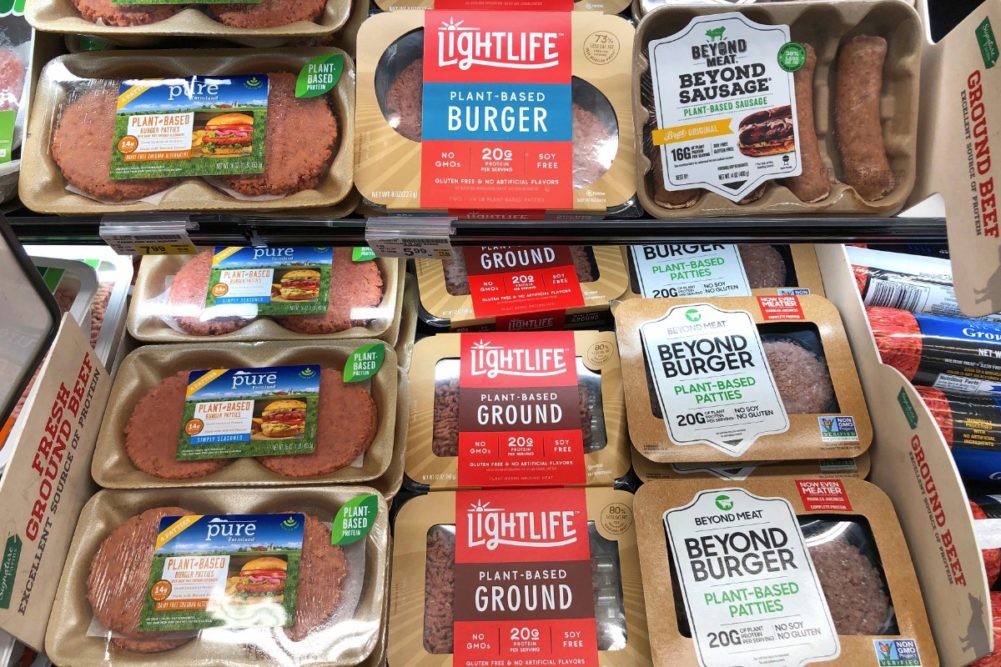LONDON — Disposable income affects whether people believe they have the extra money to spend on meat substitutes such as plant-based burgers. David Ingemar Hedin, a consultant in food and nutrition for London-based Euromonitor International, puts the dividing line at $25,000 of per-capita annual disposal income after taxes.
“That is where it seems to be enough money that consumers informed about what an excellent decision it is to buy meat substitutes also would say, ‘Well, I also have the money to buy it,’” he said in a recent Euromonitor International webinar that also focused on dairy alternatives.
The coronavirus (COVID-19) is affecting how many people hit the $25,000 disposable income threshold.
“COVID and lockdown is not striking everybody in the same way,” Hedin said. “Some people can keep working from home. Some people lose their jobs.”
Euromonitor International expects a 12% global increase in retail volume sales of meat substitutes in 2020 but an 11% decline in foodservice since restaurants shut down during the pandemic. Foodservice-reliant companies rushing to get their meat substitute items into retail may find it difficult, Hedin said. Retailers are figuring out how to restock shelves and update websites.
“Adding new things to the assortment is not a priority to the retailers,” he said.
A Google search shows how COVID-19 is affecting consumer interest in meat substitutes, he said.
“The interest in climate change still remains, but immunity has taken over as a top-of-mind topic,” Hedin said.
Proponents of meat substitutes could talk about how alternative proteins may help in preventing future zoonotic disease pandemics, he said.
Euromonitor International forecasts retail volume sales of meat substitutes in the United States to have a compound annual growth rate of nearly 10% from 2019-24. More growth may occur in other countries. The forecast CAGR for France is closer to 15%.
Non-soy items are driving growth in the milk alternatives market. Euromonitor International forecasts non-soy milk alternatives to have a CAGR of more than 8% in retail volume sales in the United States from 2019-24. The forecast for Denmark is higher at 14%.
The price factor may depend on the dairy alternative category. Prices for dairy-free milk alternatives are slightly above milk while prices for dairy-free yogurt alternatives are about double that of yogurt. The price is nearly triple for dairy-free ice cream alternatives when compared to ice cream.
Health is a major reason people choose dairy alternatives. Euromonitor International compiled responses from over 21,000 consumers globally and found 41% said they chose dairy alternatives because of digestive health. Another 39% said consuming dairy alternatives made them feel healthier. Percentages were lower for animal rights at 26% and environmental concerns at 25%.
Taking COVID-19 into account, Euromonitor expects milk alternatives to have 2% global volume growth at retail in 2020. Foodservice volume is forecast to decline by 14%, but most milk alternative sales come at retail, said Maria Mascaraque, PhD, industry manager for Euromonitor International.
Euromonitor International expects foodservice volume in milk alternatives in the United States to plunge by 30% this year. Milk alternatives were becoming popular at coffee shops in the United States before COVID-19 hit, Mascaraque said, giving the example of oat lattes at Starbucks.
People may continue to visit restaurants less frequently and eat at home more often this year both because they fear going out in public and they spend less because of a recession, she said. Companies involved in dairy alternatives will need to take a direct-to-consumer approach and deliver messages about how to experience the coffee shop experience at home, Mascaraque said.


